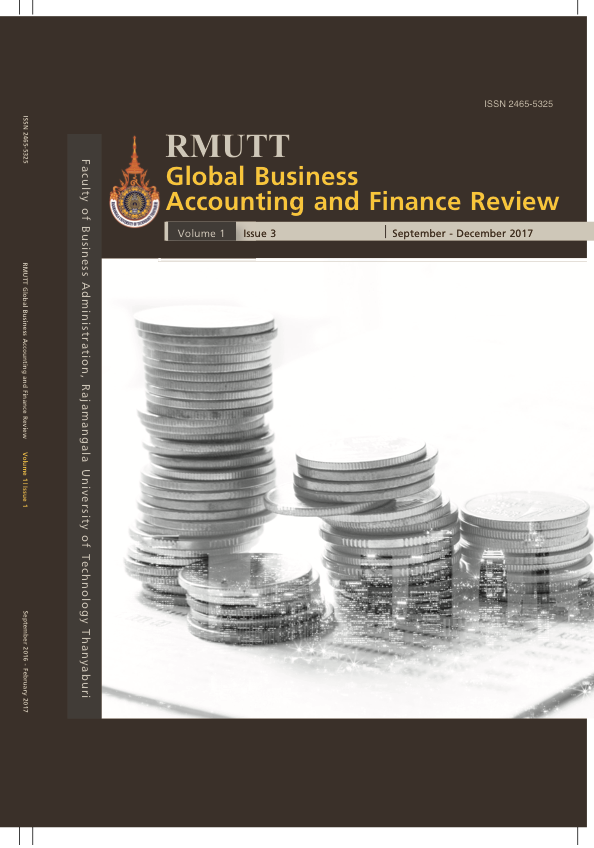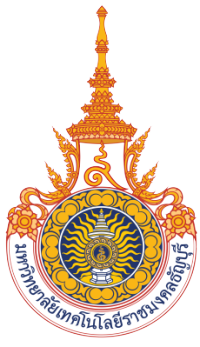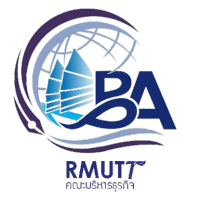Investment Strategy: Evidence from Thailand’s SET50 Index
Keywords:
SET50 Index, Capital Asset Pricing Model (CAPM), Beta CoefficientAbstract
The research aimed to suggest an appropriate portfolio from Thailand’s SET50 Index for investment. The study focused on the return and risk analysis of each common stock, in addition to the relationship of the return and risk among each common stock and the stock market in SET50 Index. Moreover, the Capital Asset Pricing Model (CAPM) was employed to calculate an appropriate required return on each common stock and then compared with its actual return to classify it as undervalued or overvalued. The risk of each common stock was assessed by using standard deviation and beta coefficient (β). The suggested investment strategy is to classify common stocks into two groups: 1) high return and high risk and 2) high return and low risk. Then, the optimal weight of investment was conducted to find out a well-diversified portfolio. The daily market prices of common stocks listed in SET50 Index were collected for three years during September 10, 2012 – 2015.
This research revealed that the groups of common stocks providing high return and high risk were True Corporation Public Company Limited (TRUE), Pruksa Real Estate Public Company Limited (PS), Central Pattana Public Company Limited (CPN), TPI Polene Public Company Limited (TPIPL), and Airports of Thailand Public Company Limited (AOT). Meanwhile, the groups of commonstocks providing high return and low risk consisted of Delta Electronics (Thailand) Public Company Limited (DELTA), Bumrungrad Hospital Public Company Limited (BH), Siam Makro Public Company Limited (MAKRO), BTS Group Holdings Public Company Limited (BTS), and Hemaraj Land and Development Public Company Limited (HEMRAJ). The optimal portfolio included TRUE, PS, CPN, TPIPL, AOT, DELTA, BH, MAKRO, BTS, and HEMRAJ with its weight of 0.001, 0.001, 0.0394, 0.0218, 0.0348, 0.1249, 0.1239, 0.1965, 0.3156, and 0.1429, respectively. Besides, the optimal portfolio provided the return of 0.1242%, standard deviation of 0.9966%, and beta coefficient (β) of 0.656, which was lower than the SET50 market.
References
Bank of Thailand (BOT)(2015). 3-Year Government Bond Yield. Retrieved September 22, 2015, from https://www.bot.or.th/Thai/Statistics/FinancialMarkets/InterestRate/Pages/StatInterestRate.aspx
Fama, E. F., & French, K. R. (1992). The Cross-Section of Expected Stock Returns. Journal of Finance, 47(2), 427–65.
Fama, E. F., & French, K. R. (2004). The Capital Asset Pricing Model: Theory and Evidence. Journal of Economic Perspectives, 18(3), 25–46.
Kahneman, D., & Tversky, A. (1979). Prospect Theory: An Analysis of Decision under Risk. Econometrica, 47(2), 263–291.
Lintner, J. (1965). The Valuation of Risk Assets and the Selection of Risky Investments in Stock Portfolios and Capital Budgets. Review of Economics and Statistics, 47(1), 13–37.
Lintner, J. (1965). Security Prices, Risk and Maximal Gains from Diversification. Journal of Finance, 20(4), 587–615.
Mahfooz, S., & Ahmed, H. (2014). Shariah Investment Screening Criteria: A Critical Review. JKAU:Islamic Econ., 27(1), 111–145.
Markowitz, H. (1952). Portfolio Selection. Journal of Finance, 7(1), 77–99.
Nilapornkul, N., Yuttasri, J., & Suaysom, T. (2016). Risk and Return: Thai Listed Finance and Security Companies Evidence. International Journal of Applied Computer Technology and Information Systems, 6(1), 95-100.
Nilapornkul, N., & Suwankhajit, M. (2017). Risk and Return of Equity Funds and Exchange-traded Fund:Krungthai Asset Management Company Limited Evidence. International Journal of Applied Computer Technology and Information Systems, 7(1), 41-46.
Sharpe, W. F. (1964). Capital Asset Prices: A Theory of Market Equilibrium under Conditions of Risk. Journal of Finance,19(3), 425–442.
Stock Exchange of Thailand (2015). Listed companies in SET50 Index. Retrieved September 10, 2016, from https://marketdata.set.or.th/mkt/sectorquotation.do?sector=SET50&language=
th&country=TH
Subpakit & Sricharueng (2015). The Analysis of Rate of Return, Risk and Valuation of Information and Communication Technology Sector’s Securities by Using the CAPM Model. National and International Conference of Business and Innovation 2015, 1660-1666.
TSI Thailand Securities Institute (2013). Financial Market and Security Investment: Return and Risk of Stock, 16, 177-209.
TSI Thailand Securities Institute (2013). Financial Market and Security Investment: Portfolio management, 16, 389.
TSI Thailand Securities Institute (2015). Fundamental of Portfolio Retrieved September 20, 2015, from https://www.set.or.th/set/onlineseminar.do?language=th&country=TH








